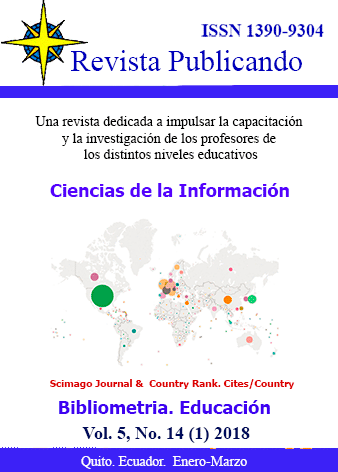Abstract
The training of mothers to improve the mother-child relationship has been one of Adler's most important services and supporters. The purpose of this study was to determine the effectiveness of Adlerian approach to mothers' training on emotional positive strategies of depressed children and reduction of depression. The present study is a library research method and it is a type of applied research and data collection method is survey type. Semi-experimental research is an interventional, pre-test, post-test with control group. The findings were obtained by SPSS software and CADS questionnaire (Jan 2005). Alpha coefficient with Cronbach's alpha method is equal to 0.8616. The statistical population consists of all students of the sixth grade elementary schools of Kamyaran city in the academic year of 96-95, which is 818 people. At first, two schools were selected through cluster sampling method from the schools of boys and girls in Kamyaran city. Sixty mothers of students were divided into two experimental and control groups (based on age, occupation and mother's educational level) And completed the questionnaire, 30 of them were selected as research sample. As a result, it was found that maternal education had a significant effect. Students whose mothers are employed are more prone to depression than their mothers, and also found that students with mothers who are younger are more likely to develop depression than those with older mothers.
References
Bilali, Roghieh, Hosseousfi, Alireza, 2011, The Effectiveness of Mothers' Training Program on Reducing Behavioral Disorders in Children, Journal of Applied Psychology, Vol. 5, No. 4 (20).
Nik, Atefeh (2013). The Effectiveness of Mothers' Self-Education Technique on Reducing Anxiety and Depression in Students. Master's Degree. Faculty of Psychology. Azad University Central Tehran Branch
Abramson, L. Y., Metalsky, G. I., & Alloy, L. B. (1989). Hopelessness depression: A theory-based subtype of depression. Psychological review, 96(2), 358.
Abramson, L. Y., Seligman, M. E., & Teasdale, J. D. (1979). Learned helplessness in humans: Critique and reformulation. Journal of abnormal psychology, 87(1), 49.
Alloy, L. B., & Riskind, J. H. (2006). Cognitive vulnerability to emotional disorders. New Jersey: Lawrence Erlbaum Associates.
Andrés, M. L., Richaud de Minzi, M. C., Castañeiras, C., Canet-Juric, L., & Rodríguez-Carvajal, R. (2016). Neuroticism and Depression in Children: The Role of Cognitive Emotion Regulation Strategies. The Journal of genetic psychology, 177(2), 55-71.
Aronen ET, Soininen M. Childhood depressive symptoms predict psychiatric problems in young adults. Can. J. psychiatry 2000, 45(5): 467-70.
Barkely, R. A. (1987). ADHD and the nature of self-control. New York.
Barlow, J., Smailagic, N., Huband, N., Roloff, V., & Bennett, C. (2014). Group”based parent training programmes for improving parental psychosocial health. The Cochrane Library.
Belden, A. C., Pagliaccio, D., Murphy, E. R., Luby, J. L., & Barch, D. M. (2015). Neural activation during cognitive emotion regulation in previously depressed compared to healthy children: evidence of specific alterations. Journal of the American Academy of Child & Adolescent Psychiatry, 54(9), 771-781.
Bemporad, J. R. (1994). Dynamic and interpersonal theories of depression. In Handbook of depression in children and adolescents (pp. 81-95). Springer US.
Bendixen RØŒElder JØŒDonaldson S, Kairalla Effects of a Father-based In-Home Intervention on Perceived Stress and Family Dynamics in Parents of Children with Autism. Am J Occup Ther 2011;65(6):679-687.
Birmaher B, Ryan ND, Williamson DE et al. Childhood and adolescent depression: A review of the past 10 years, part I. J Am. Acad. Child Adolesc. Psychiatry, 1996, 35: 1427-1439.
Bowlby, J. (1961). The Adolf Meyer Lecture Childhood Mourning and Its Implications for Psychiatry. American Journal of Psychiatry, 118(6), 481-498.
Campbell-Sills, L., & Barlow, D. H. (2007). Incorporating emotion regulation into conceptualizations and treatments of anxiety and mood disorders. In J. J. Gross (Ed.), Handbook of emotion regulation (pp. 542−559). New York:
Carlson, G. A., Cantwell, D. P (1980). Unmasking masked depression from childhood through adulthood: Analysis of three studies. American Journal of Psychiatry, 145(1), 12221225. Guilford Press.
Castellanos, F. X., Lee, P. P., Sharp, W., Jeffries, N. O., Greenstein, D. K., Clasen, L. S., ... & Zijdenbos, A. (2002). Developmental trajectories of brain volume abnormalities in children and adolescents with attention-deficit/hyperactivity disorder. Jama, 288(14), 1740-1748.
Cole, P. M., Martin, S. E., & Dennis, T. A. (2004). Emotion regulation as a scientific construct: Methodological challenges and directions for child development research. Child Development, 75, 317−333.
Compass, B. E., Forehand, R., Thigpen, J., Hardcastle, E., Garai, E., McKee, L, & Bettis, A. (2015). Efficacy and moderators of a family group cognitive–behavioral preventive intervention for children of parents with depression. Journal of consulting and clinical psychology, 83(3), 541.
You are free to:
Share — copy and redistribute the material in any medium or format.
Adapt — remix, transform, and build upon the material.
The licensor cannot revoke these freedoms as long as you follow the license terms.
Under the following terms:
Attribution — You must give appropriate credit, provide a link to the license, and indicate if changes were made. You may do so in any reasonable manner, but not in any way that suggests the licensor endorses you or your use.
NonCommercial — You may not use the material for commercial purposes.
ShareAlike — If you remix, transform, or build upon the material, you must distribute your contributions under the same license as the original.
No additional restrictions — You may not apply legal terms or technological measures that legally restrict others from doing anything the license permits.
